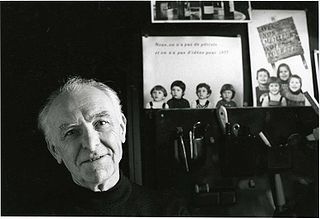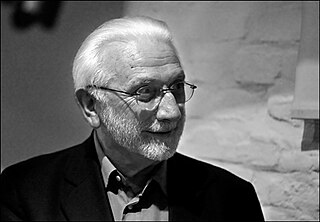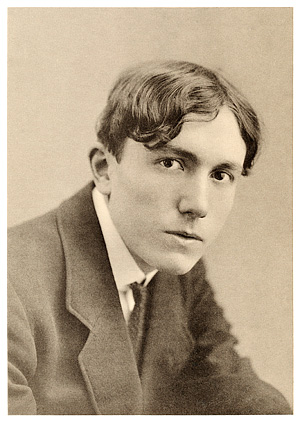
Pierre Toutain-Dorbec, (born 16 April 1951) in Orbec, Normandy, France is a Franco-American photographer, artist, author, and publisher whose work emphasizes a humanist perspective.

Pierre Toutain-Dorbec, (born 16 April 1951) in Orbec, Normandy, France is a Franco-American photographer, artist, author, and publisher whose work emphasizes a humanist perspective.
Pierre grew up in Orbec, Normandy, and Paris. His family moved between Paris and Orbec to accommodate Pierre's education and his mother's career. His artistic education began within his family; his parents provided instruction in traditional techniques in drawing, painting, and sculpting. His grandfather, Gabriel, was a photographer during World War I and his uncle Jean was also a photographer and artist. Pierre's father, Jacques, was a known textile expert and designer, and later a painter. His mother, Francoise Fontaine, was a professional musician and opera singer. From his uncle, Pierre received instruction in photography and film development. Toutain-Dorbec was influenced by his grandparents' neighbor, the French figurative painter Pierre Laffille (French, 1938–2012), who remained a life-time friend. At age 16, Toutain-Dorbec attended the Atelier de la Grande-Chaumiere, a renowned art school in Paris, where he received a classical education in fine art. While attending art school, Toutain-Dorbec supplemented his art education working as an assistant with the acclaimed German photographer Wilhem Maywald, who resided near the school.
By the end of 1968, with the encouragement of his family Toutain-Dorbec left home to pursue a career as a photographer. [1] He began his career as photographer in Vietnam. From 1968 to 1995 Pierre worked as a war correspondent, for both Gamma and Sygma press agencies, and as a freelance photographer. His work focused mainly on Southeast Asia and North Africa. He covered his time in Vietnam and Cambodia with the Khmer Rouge [2] [3] [4] [5] [6] [7] (a collection of those photos are archived at Rutgers University). While in Burma he covered the problems of guerrillas fighting the government, like the Karen. Toutain-Dorbec worked to draw attention to the problems of child abuse and child prostitution [8] in Southeast Asia, and problematic laws which could result in children being incarcerated alongside their fathers. He paid particular attention to issues associated with illicit drugs, especially heroin. Toutain-Dorbec advocated the importance of fair judicial treatment for foreigner in the courts. He worked for two years in Morocco from 1978 to 1979 for the King, photographing then-Crown Prince Sidi Mohammed and further documenting Morocco. King Hassan II has a large collection of his photographs. In India, he worked extensively on fiction regarding leprosy, religion and ancient cities. Toutain-Dorbec lived and worked with the Dalai Lama in 1983–84, co-authoring two books with him. He also photographed old French traditions going back to the Middle Age (some of the stories are now part of museum collections, like the Musée des Traditions in Louviers, Normandy). He also worked for the movie industry.
From 1995 to 2003, Toutain-Dorbec lived in France and Spain where he pursued personal projects, primarily sculpture and photography. In 2002, he became the director and curator of the International Museum for Photography, located in the ancient Chateau de Belcastel; [9] Toutain-Dorbec has received acclaim for his work in this capacity. In 2004, he moved to New Mexico commencing a project documenting the United States. Currently, he lives in Cannon Beach, [10] Oregon, where he and his wife Claudia operate the Cannon Beach Hotel.
Following his artistic urges from an early age, Pierre Toutain-Dorbec photographed and drew his family and his native countryside, Normandy. Throughout his career, Toutain-Dorbec's photographic work has remained true to his original training. His photographs are primarily black and white, taken on traditional film. He maintains his own darkroom where he processes his film and silver gelatins himself. Toutain-Dorbec so far has published over forty books and exhibited his photographs, drawings, sculptures, and paintings throughout Asia, Europe, America, and North Africa.

Martin Parr is a British documentary photographer, photojournalist and photobook collector. He is known for his photographic projects that take an intimate, satirical and anthropological look at aspects of modern life, in particular documenting the social classes of England, and more broadly the wealth of the Western world.

Marc Riboud was a French photographer, best known for his extensive reports on the Far East: The Three Banners of China, Face of North Vietnam, Visions of China, and In China.

Henri Cartier-Bresson was a French humanist photographer considered a master of candid photography, and an early user of 35mm film. He pioneered the genre of street photography, and viewed photography as capturing a decisive moment.

Hippolyte Bayard was a French photographer and pioneer in the history of photography. He invented his own process that produced direct positive paper prints in the camera and presented the world's first public exhibition of photographs on 24 June 1839. He claimed to have invented photography earlier than Louis-Jacques Mandé Daguerre in France and William Henry Fox Talbot in England, the men traditionally credited with its invention.

Robert Doisneau was a French photographer. From the 1930s, he photographed the streets of Paris. He was a champion of humanist photography and with Henri Cartier-Bresson a pioneer of photojournalism.
Israëlis Bidermanas, who worked under the name of Izis, was a Lithuanian-Jewish photographer who worked in France and is best known for his photographs of French circuses and of Paris.

Fashion photography is a genre of photography which is devoted to displaying clothing and other fashion items, sometimes haute couture. It typically consists of a fashion photographer taking a picture of a dressed model in a photographic studio or an outside setting. It originates from the clothing and fashion industries, and while some of fashion photography has been elevated as art, it is still primarily used for clothing, perfumes and beauty products.
Raghubir Singh (1942–1999) was an Indian photographer, most known for his landscapes and documentary-style photographs of the people of India. He was a self-taught photographer who worked in India and lived in Paris, London and New York. During his career he worked with National Geographic Magazine, The New York Times, The New Yorker and Time. In the early 1970s, he was one of the first photographers to reinvent the use of color at a time when color photography was still a marginal art form.

Lucien Clergue was a French photographer. He was Chairman of the Academy of Fine Arts, Paris for 2013.

Auguste Jean-Marie Pavie was a French colonial civil servant, explorer and diplomat who was instrumental in establishing French control over Laos in the last two decades of the 19th century. After a long career in Cambodia and Cochinchina, Pavie became the first French vice-consul in Luang Prabang in 1886, eventually becoming the first Governor-General and plenipotentiary minister of the newly formed French colony of Laos.

Guy Le Querrec is a French photographer and filmmaker, noted for his documentary images of jazz musicians. He is a member of Magnum Photos.
Germaine Luise Krull was a photographer, political activist, and hotel owner. Her nationality has been categorized as German, French, and Dutch, but she spent years in Brazil, Republic of the Congo, Thailand, and India. Described as "an especially outspoken example" of a group of early 20th-century female photographers who "could lead lives free from convention", she is best known for photographically illustrated books such as her 1928 portfolio Métal.
Jean-Pierre Laffont is a French-American photojournalist, born in Algeria, based in New York City. He was the founding member of Gamma USA and Sygma, the largest photography agency in the world, which in 1999 was acquired by the Corbis Corporation.

Philippe Robert is a French photographer. His work includes portraits, fashion, and advertising photos.

Gérard Rondeau was a French photographer. He took photographs of World War I battlefields in his native Marne, the Reims cathedral, and black-and-white portraits of celebrities and authors. His photography was exhibited both in France and internationally. He was the recipient of an award for his work. He was the illustrator of over 20 non-fiction books.
André Zucca (1897-1973) was a French photographer and Nazi collaborator, most well known for his work with the German propaganda magazine Signal.

Jean-Loup Trassard is a French writer and photographer.

Jean Reutlinger was a French photographer.

Yan Morvan is a French photographer, journalist, photojournalist and author particularly recognized for his war photography and images of underground communities.